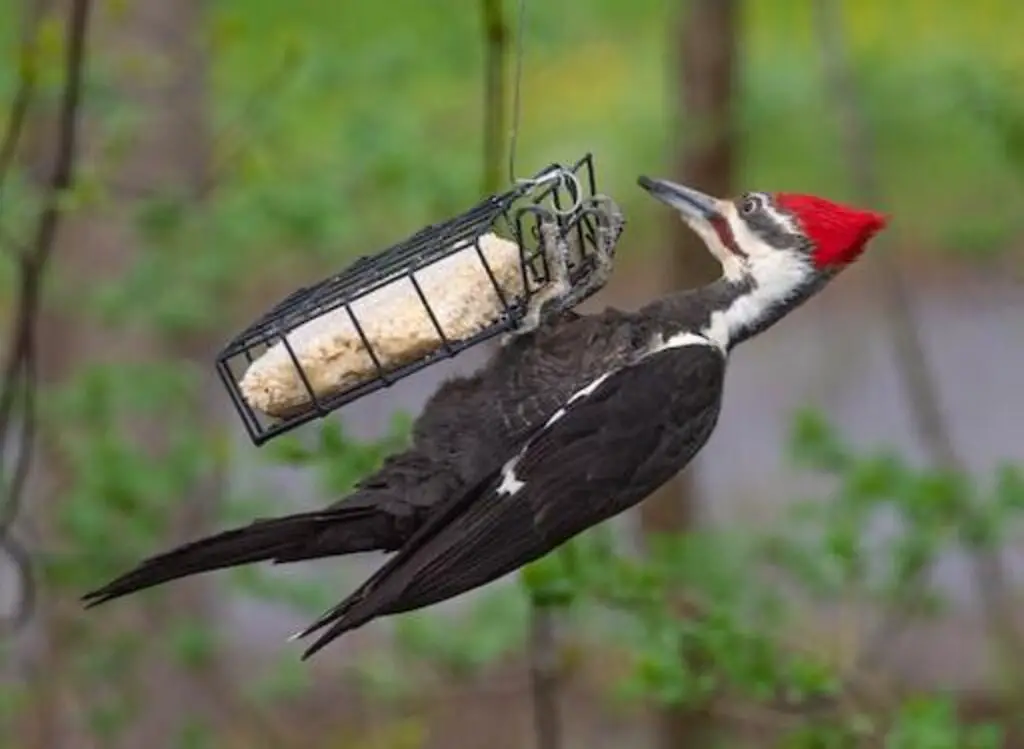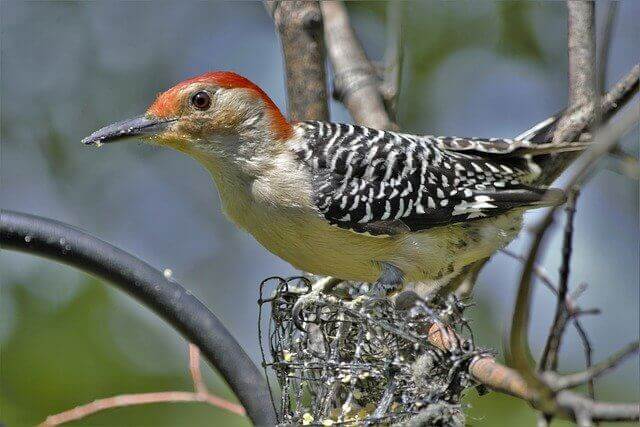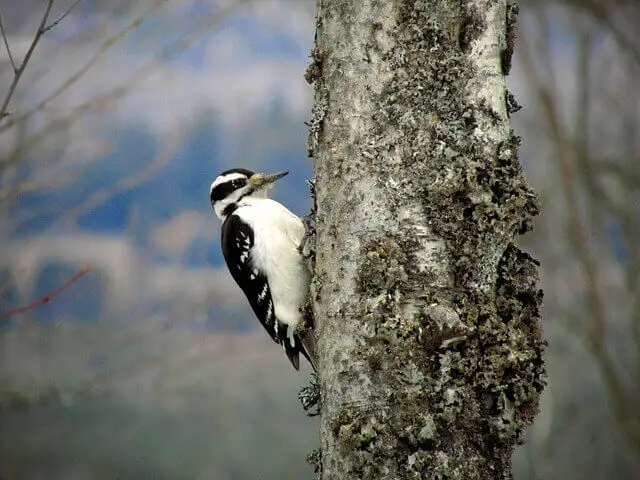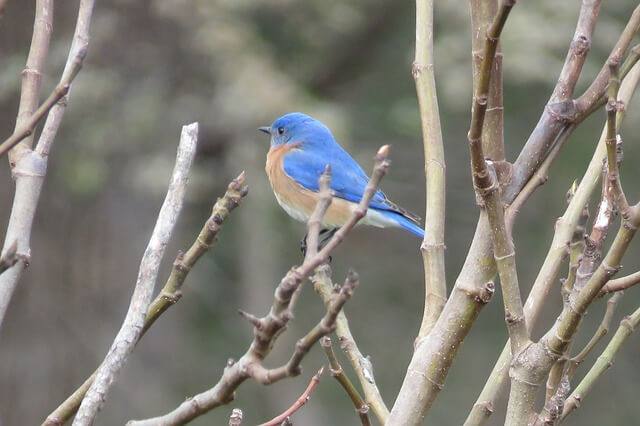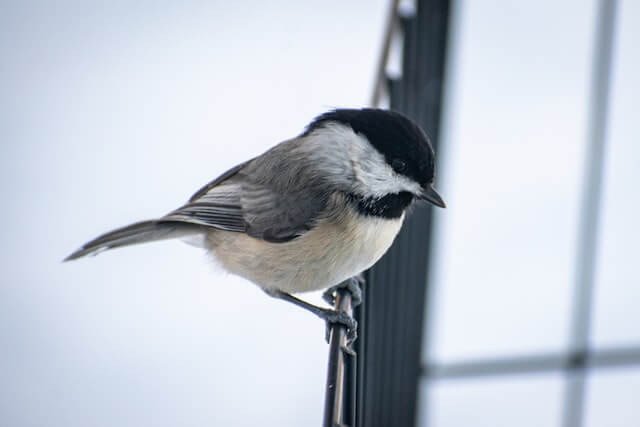Do you have many birds that visit your backyard during winter? If so, chances are they love suet! Suet is a hard fat that’s good for feeding birds in winter, and birds go crazy over it. Suet is high in energy and helps provide birds with the sustenance they need during the cold weather.
It also provides them with valuable fatty acids and other nutrients that they may not find elsewhere during the winter. Here are the 17 most common backyard birds that eat suet you can expect to see.
Table of Contents
- 1 Backyard Birds That Eat Suet
- 1.1 Downy Woodpecker
- 1.2 Pileated Woodpecker
- 1.3 Red-bellied Woodpecker
- 1.4 Hairy Woodpecker
- 1.5 Northern Flicker
- 1.6 Yellow-rumped Warbler
- 1.7 Winter Wren
- 1.8 White-breasted Nuthatch
- 1.9 European Starling
- 1.10 Blue Jay
- 1.11 Eastern Bluebird
- 1.12 Brown Creeper
- 1.13 Brown Thrasher
- 1.14 Black-capped Chickadee
- 1.15 Caroline Chickadee
- 1.16 Pine Siskin
- 1.17 Tufted Titmouse
- 2 Author
Backyard Birds That Eat Suet
Downy Woodpecker
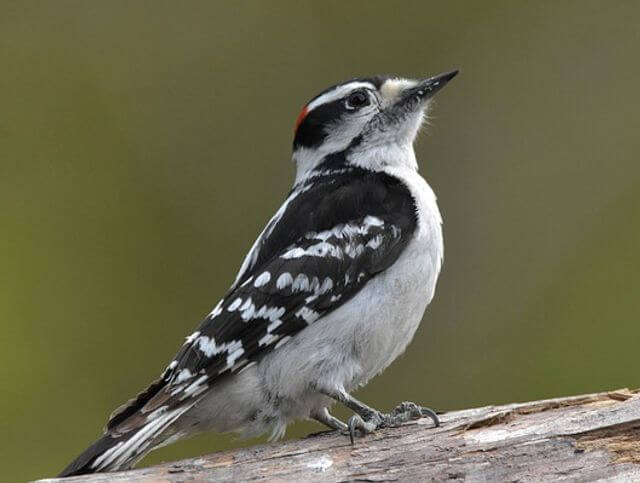
The Downy Woodpecker is a common bird in North America. It ranges from the coastal regions of southern Canada, down through the eastern United States, to central Mexico. In the south, it can be found as far north as Texas. The Downy Woodpecker is a cavity nester and digs complex, deep holes in trees for its nests.
Nests are typically built in dead or dying trees that are close to water sources. The diet of the Downy Woodpecker consists mainly of insects such as beetle larvae ants, termites, but it will also feed on tree sap, berries, fruits, seeds and in winter suet.
Handpicked Related Post: How to Attract Downy Woodpeckers to Your Yard? (Easy!)
Pileated Woodpecker
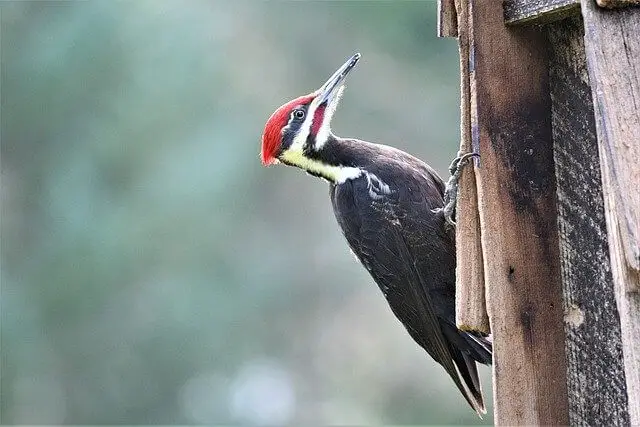
The Pileated Woodpecker is a large and impressive bird that can be found throughout much of the eastern United States. This woodpecker is the largest in North America and has a massive head and bill. It has a distribution range that spans from Newfoundland south to Florida, west to Texas, and north to Manitoba. The Pileated Woodpecker primarily inhabits temperate deciduous and mixed forests, but can also be found in open oak-hickory Forests, mature pine plantations, and even urban areas.
The Pileated Woodpecker feeds on insects high in protein, such as beetles, ants and love suet. They typically forage for food in tall trees or among the branches of lower trees. Nests are typically built in holes in trees, but have been known to nest in other tight spaces, including stumps or under bridges.
Handpicked Related Post: How to Attract Pileated Woodpeckers to your Yard (Fast)
Red-bellied Woodpecker
The red-bellied woodpecker is a woodpecker that is seen in the eastern United States. Its distribution range includes most of the eastern half of the country, from northeast Texas and southeastern Oklahoma, across most of Missouri and southern Illinois, to central Indiana and western Ohio. It also occurs in northern Kentucky, southern Michigan, and parts of Minnesota. In the west, it is found mainly in California and Oregon.
This woodpecker is usually found in deciduous or mixed woods, with some areas near open fields. It prefers to nest in holes in trees but will use other cavities such as under eaves or outside walls if they are available. The red-bellied woodpecker eats insects, especially termites and ants, but also fruit and suet when available.
Handpicked Related Post: How to Attract Red-bellied Woodpeckers to your Yard?
Hairy Woodpecker
The hairy woodpecker is found throughout North America, except for the extreme south. Out of all the woodpeckers, it is one of the most common and widespread. Hairy woodpeckers are found in a variety of habitats including deciduous, coniferous, and mixed forests as well as suburbs.
They prefer to live near trees, but can also be found in open areas. They eat insects such as beetles, ants, and bees and suet in winter. Hairy woodpeckers usually excavate their own nests in holes in tree trunks or branches a couple of weeks before they lay their eggs. Nests are not lined, and the eggs are laid on a bed of wood chips. The hairy woodpeckers typical clutch size is 4 -6 eggs.
Northern Flicker
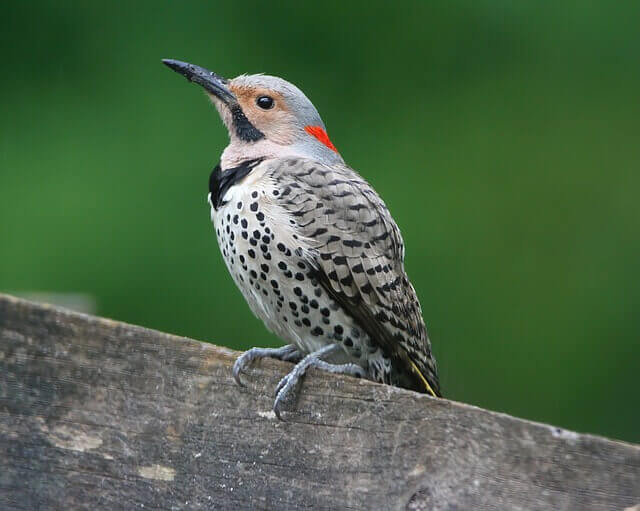
The Northern Flicker occupies a wide distribution range across the United States and Canada. In the south, it can be found throughout most of Texas and Louisiana. In the east, it ranges from southern New Hampshire to eastern Manitoba. Throughout the north, it can be found in all of central Canada, as well as parts of Ontario and Quebec. The Northern Flicker is a common bird in many forested areas, but it also frequents open areas near water.
It feeds on insects such as beetles and ants, especially those that live on or near trees, but will also feed on seeds, fruits and all kinds of berries. Northern Flickers nest in holes in dead or diseased trees, but they are also known to use other cavities, such as abandoned crows nests or logs. The typical clutch size is four to eight eggs and incubate them for about 11-14 days.
Handpicked Related Post: How to Attract Northern Flickers to your Backyard (Easy)
Yellow-rumped Warbler
The yellow-rumped warbler is a common migrant and wintering bird in North America. The distribution range of this species extends from the southwestern United States and central Mexico to southeastern Canada. The yellow-rumped warbler is most commonly found in deciduous and mixed woodlands, but will also inhabit urban areas and agricultural landscapes.
This species is primarily insectivorous, feeding on insects caught in flight or gleaned from foliage, but occasionally feed on small fruit and berries. Yellow-rumped warblers, typically build their nests on a horizontal branch of a conifer.
Handpicked Related Post: How to Attract Warblers to your Yard? (Expert Tips)
Winter Wren
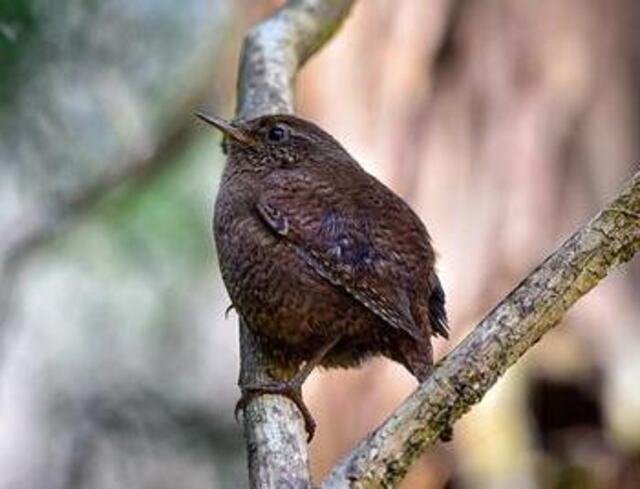
Winter wrens are small, brown birds that live in the northern hemisphere. They have a Distribution Range of North America from Alaska to central Mexico and south to Argentina. They also range into parts of South America, but their stronghold is in the northern part of their range.
They prefer habitats with deciduous trees and bushes for nesting, usually high up on horizontal branches. Their diet consists mainly of insects and other small creatures, but they will also eat seeds, berries and fruit. Nesting takes place between late February and April in North America and early May in Europe.
Handpicked Related Post: How to Attract Wrens to your Backyard? (Expert’s Guide)
White-breasted Nuthatch
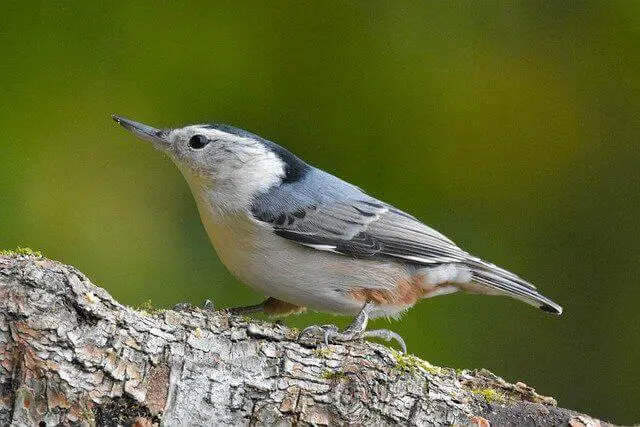
The white-breasted nuthatch is a common bird that inhabits most of North America. It occupies a wide range, from the Arctic tundra to the humid tropics. This bird is found in both deciduous and coniferous forests, but favors moist habitats with plenty of small branches and twigs on which to build its nest.
The white-breasted nuthatch is an omnivore and eats insects, fruits, nuts and seeds. It nests in a hole in a tree or on a horizontal branch, usually constructing its own entrance with sticks and mud.
Handpicked Related Post: How to Attract Nuthatches to your Backyard? Expert Tips!
European Starling

The European Starling is a small passerine bird found across much of Europe and parts of Asia. It is a common bird in gardens and parks, but can also be found in open country, especially near water. The European Starling feeds mainly on insects, but will also take some seeds and other food items.
The European Starling breeds in open country throughout its range, usually building a nest in a cavity such as an old woodpecker hole. Nest lining consists of pine needles and grass, feathers, string, and garbage. Each clutch consists of two to six eggs, which are incubated by both sexes for 12-14 days. The chicks fledge after 21 days and are able to fly within 2 weeks.
Handpicked Related Post: How To Attract European Starlings To Your Yard Fast?
Blue Jay
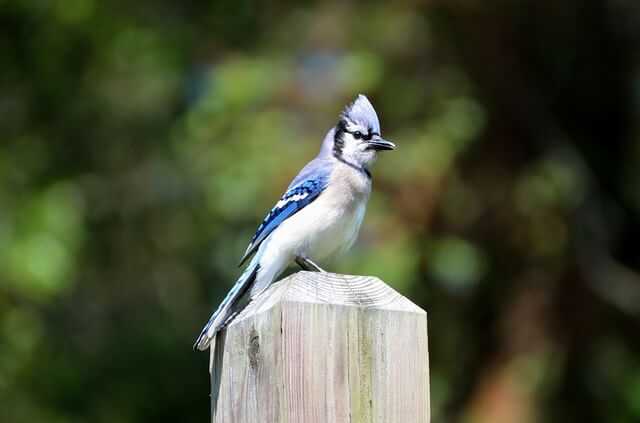
The Blue jay is a bird with widespread recognition in North America. They can be seen in almost every state except for Alaska. Their distribution range covers a large area from the north central United States, through Canada and down to southern Mexico. The blue jay is a migratory bird and its habitat ranges from open woodland to suburban areas.
It is a generalist feeder and will eat insects, small mammals, and fruits. It prefers to forage high up in tree crotches, where it can watch for predators and steal food from other birds. The blue jay nests in trees but has also been known to nest on cliffs, buildings, or power lines.
Handpicked Related Post: What Attracts Blue Jays to your Yard?(Expert Tips)
Eastern Bluebird
Eastern Bluebirds are an iconic bird in the eastern United States. They are distributed throughout much of the east, although their range extends into the Midwest and West as well. The Eastern Bluebird is a migratory bird and spends winter in Central and South America.
The Eastern Bluebird’s habitat includes deciduous and mixed woodlands, as well as suburban areas with some open space. They feed mostly on insects, fruit, and other small creatures. In summer, they often forage for food in or near water. Nests are constructed of roots, mud, grasses, leaves, and feathers within a cavity such as a tree or large shrub.
Handpicked Related Post: How to Attract Eastern Bluebirds to your Yard (Explained)
Brown Creeper
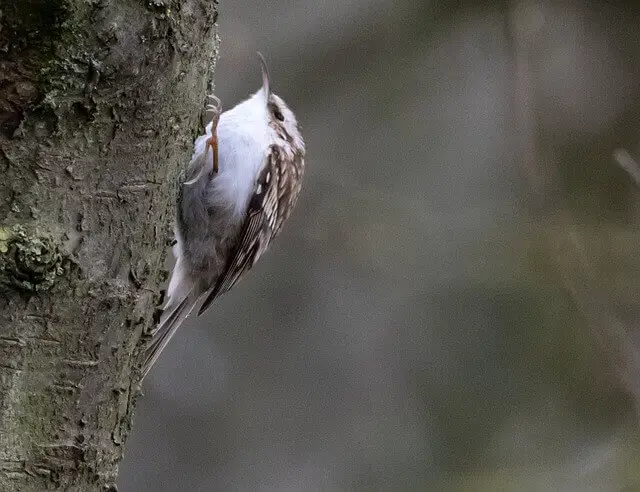
The Brown Creeper, is a common bird in the eastern United States. The species ranges from southern Maine to Texas, but is most abundant in the Appalachian Mountains. The Brown Creeper is a shy and elusive bird that spends much of its time high up in trees, where it feeds on insects.
The Brown Creeper nests high up in trees, typically 40 feet high. The female builds a cup-shaped nest of leaves and bark, laying four to six white eggs with speckled rust-colored spots. Young birds are cared for by their parents for two months before they fledge and become independent.
Brown Thrasher
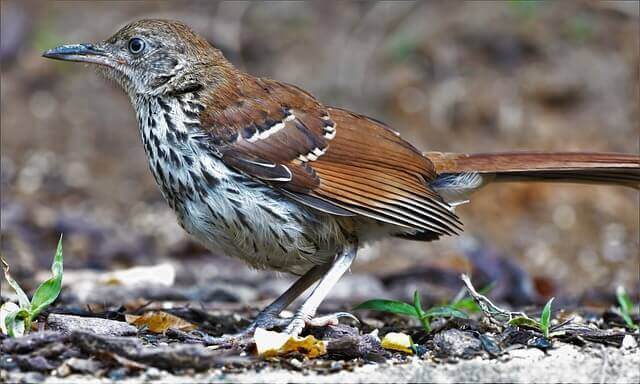
The brown thrasher is a fairly common bird in the eastern United States and parts of Canada. It ranges from southern New England and the Great Lakes region to Georgia, Alabama, and southeastern Texas. This bird favors habitats with dense understory and plentiful fruit and insect resources.
The brown thrasher feeds mostly on insects, but will also eat small vertebrates like frogs or young birds. Nests are built in low bushes or trees and usually contain one or six eggs per clutch, with an incubation period of 11-14 days.
Black-capped Chickadee

The black-capped chickadee is a common bird seen primarily in North America. The range extends from the Arctic tundra in the north to the tropics in the south, with populations also found in Central and South America. This small bird occupies a wide variety of habitats, from dense coniferous forests to open fields and suburbs.
The chickadee is an insect-eating bird and its diet consists largely of seeds, insects, and other small creatures. It builds its nest primarily out of sticks and other plant matter, often choosing abandoned woodpecker cavities.
Handpicked Related Post: Unique Black-capped Chickadee Facts You Need To Know!
Caroline Chickadee
The Carolina Chickadee, Parus carolinensis, is a small bird found in the eastern United States. This species ranges from southern New England and northern Missouri south to central Florida and west to eastern Texas. The Carolina Chickadee lives in deciduous and mixed woods, preferring areas with high levels of tree cover.
They also inhabit riparian habitats and heavily wooded suburban gardens. The Carolina Chickadee feeds primarily on insects, but will also eat seeds and berries. This species nests in abandoned woodpecker cavities or sometimes in a tree cavity lined with feathers or moss.
Pine Siskin
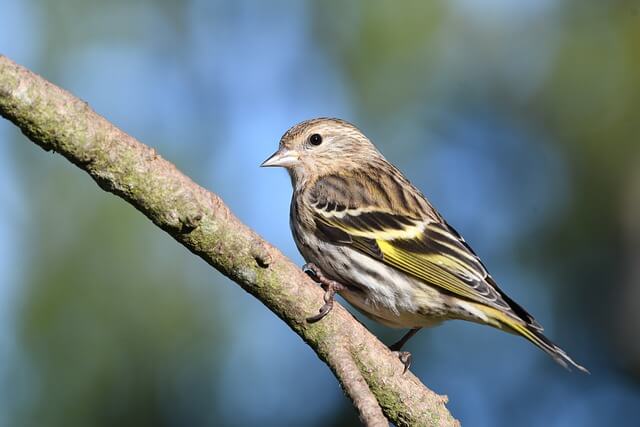
The pine siskin is a small, sprightly bird that inhabits the forested regions of North America. It has a broad distribution, breeding in all of the United States and most of Canada, as well as parts of Mexico and Central America.
The pine siskin is an insect-eating bird, mainly consuming insects such as ants, beetles and caterpillars. It also eats plant matter such as seeds and fruit. In the winter, it supplements its diet with suet. The female typically lays two to five eggs per clutch, which incubate for 11-13 days.
Tufted Titmouse
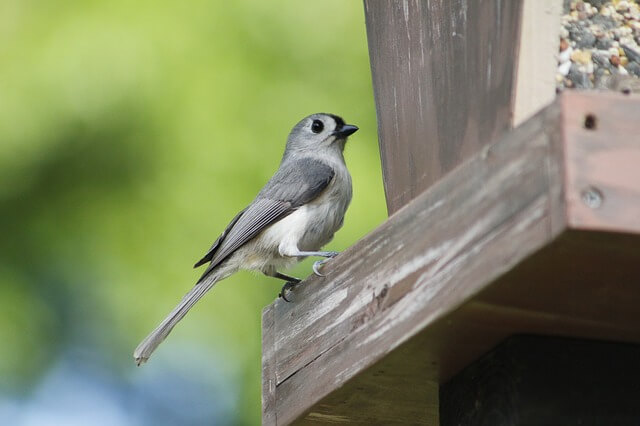
The tufted titmouse is a small bird that lives in the eastern United States and parts of Canada. This bird is most common in the southern Great Lakes region, but it can also be found in the northeast. The tufted titmouse ranges from southern New York to central Texas, but it’s most common in the mid-Atlantic states.
This bird likes to live near water, so it’s often found in wetlands or near rivers. The tufted titmouse eats insects, seeds, nuts, berries, and plant matter. It usually nests in cavities such as tree holes or abandoned birds’ nests.
Handpicked Related Post: How to Attract Tufted Titmouse to my Yard? (Explained)

